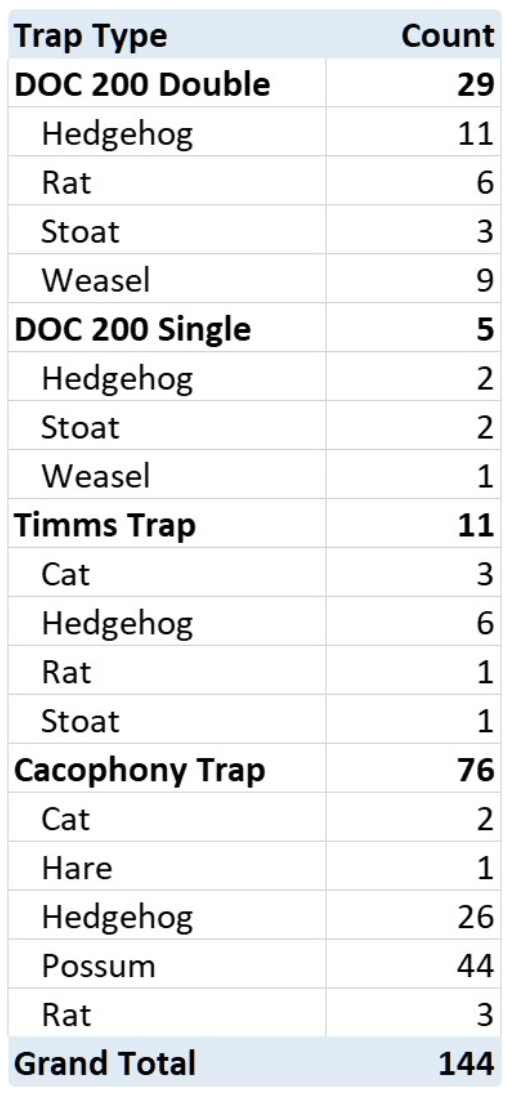Cacophony trap showing ten times (10x) higher catch rate
We've had our trap out in the field and, over a sustained period, the trap has shown a catch rate 10x higher than traditional traps.
We report on results of a trap deployment from September 2021 through to March 2022. A generous donor (who wishes to remain anonymous) decided he wanted to support a local project by funding a set of our equipment to be lent to the project to see if a marked impact could be made in the protection of native biodiversity. We reached out to our friends at DOC, spoke and met with the team at Te Waihora (Lake Ellesmere). The team is working on restoring wetlands along the northern and western shores of Te Waihora. The area selected is a breeding territory for at least two endangered species; the Australasian Bittern and the Marsh Crake. To protect nesting sites, DOC has had a number of trap lines in the area for quite some time - the traps used being DOC 200s (both double and single) and Timms traps. With the help of our partners at 2040.co.nz, we delivered and deployed 10 Cacophony High Interaction Rate traps and 10 Thermal AI cameras to watch all the activity. We set up the first trap and then let the DOC team take over - the team swiftly picked up the tips and tricks we suggested and were experts in Cacophony trap installation in no time.
This version of the trap is still using a live capture cage which means the team need to visit every time an animal is caught. With one of our cameras watching each trap, it's easy for the team to check the footage online (via the Cacophony Monitoring Platform) before deciding if they need to visit a trap location to clear a trap. Otherwise, the traps are left to do their automated thing and need nothing more other than a battery replacement from time to time (approximately once a month but depends on how many times the trap triggers).
If you're like us, you love seeing evidence of catches, so here's an example video for you:
Plenty more videos available on request.
The table below shows a summary of catches over the period by trap type.
The Cacophony trap's open architecture allows it to target all predators so you'll get a wider set of species being caught than in the other traps. Overall, the trap is showing very promising results.
An interesting metric to keep tracking is the catches per trap ratio. We deployed 10 Cacophony traps. The existing trapping lines in the area have a total of 86 traps. The table below shows the average number catches per trap.
So it seems that, on average, the Cacophony traps caught more than ten times as many predators per trap as the existing trapping network. There are of course a number of factors that can influence the success rate of a trap. But these results gives us real confidence that the traps are succeeding on a few of our goals:
The traps are catching a wide range of predators - cats, hedgehogs, possums, rats, and even a hare.
The traps seem to have a higher catch rate than both DOC 200 traps and Timms traps.
The traps are performing reliably in the field and require little maintenance
There are a couple of key improvements in R&D right now that we believe will increase the usefulness of the trap further. Watch this space for some great news on that front.
Many thanks to Manaaki Whenua Landcare Research for their contribution and collaboration throughout the development of this tool.
As always, we welcome your feedback so don't hesitate to get in touch - leave a comment below or email us at blog@cacophony.org.nz.



